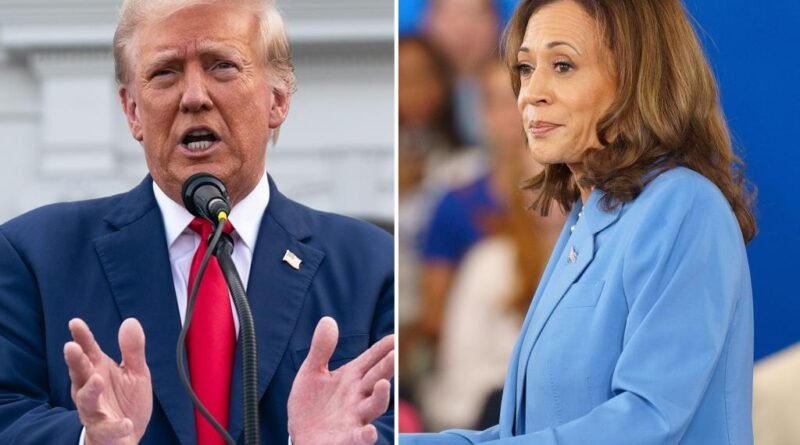To secure victory in November, Donald Trump needs to improve his support among white voters.
Kamala Harris’ emergence as the Democratic presidential nominee has upended the race. She now leads in most national polls and in many recent swing state polls. Momentum is clearly on her side.
What most analysts have overlooked, though, is where her support is coming from.
While she has made up ground among all demographics from President Biden’s dismal post-debate standing, she remains well behind historic levels of Democratic support among blacks and Latinos.

That means the reason she’s in the lead is that she’s doing historically well among whites, especially college-educated whites. So her already slim lead is much more tenuous than it looks.
The Cook Political Report’s polling average makes this clear. It shows Harris with a thin lead nationally, 47.3% to 46.9%.
It also shows her with wide leads among blacks (75-19) and Hispanics (53-41).
An average reader would see those data and think she leads because of those demographics. The political pro immediately makes the opposite conclusion, because these margins, as large as they are, are much smaller than Democrats traditionally win.
Cook helpfully provides some data from 2020 that subtly makes this point.
Biden beat Trump 90-9 among blacks and 60-37 among Hispanics.
Trump got roughly 47% of the vote in 2020, so he should be doing better than that in the polls now given that that he’s polling much better among these groups, which cast over 20% of all votes in 2020.
Yet he’s only running even with his 2020 showing despite these impressive gains — because he is losing votes among whites.
Polls by Emerson College, Ipsos and Survey USA show Trump leads by either 13 or 14 points among whites in a one-on-one race with Harris. But Trump won whites by 17 points in 2020, per the exit poll.
Republicans have done even better with white voters in other recent presidential races.
Trump beat Hillary Clinton by 21 points with white voters in 2016; Mitt Romney trounced Barack Obama by 20 points with them in 2012.
Harris’ deficit among whites is only slightly more than the 12 points that Barack Obama lost them by in 2008.
That was a year when the stock market was collapsing, the world was falling into recession and the incumbent Republican president had a job approval rating of just 28% on Election Day.
It boggles the mind that Harris could nearly equal Obama’s result, given that she is the incumbent vice president for an administration whose own job approval ratings are dismal.
Trump’s own unpopularity is not likely the cause. He remains disliked by more people than liked, but his current 44.3% favorability rating is over 2 points higher than it was on Election Day 2020.
Nor is Harris herself especially popular. She, too, is disliked by more people than like her, and her 45.5% favorability rating is only slightly higher than Trump’s.
The factors point to a simple reason for her standing: hype. She’s been the subject of massive amounts of uncritical attention for the past month.
This has fueled a rise in her favorability rating, but it also presumably has helped persuade people who dislike both candidates to reluctantly favor her in a showdown with Trump.
So there’s reason to think Trump can fight back. The campaign has already booked tens of millions of dollars of ads in the swing states to run over the next three weeks.
That alone could cause some of the hype to fade there.
Trump can also use personal appearances to make the case that Harris is too liberal and too weak to be president.
That, however, would require more effort and discipline than he has shown in recent weeks.
If he can do that, though, it wouldn’t take much to propel him into the lead.
Whites will cast roughly two-thirds of all votes this year. Winning them by 16 points rather than 13 may not seem like much of a difference, but that small change shifts the national margin by about two percentage points in Trump’s favor.
It’s the difference between victory and defeat.
Whites are even more decisive in the key Midwestern swing states. They cast between 81% and 86% of the vote in Michigan, Pennsylvania and Wisconsin.
Given Trump’s gains with non-white voters, Harris has to run better than Biden with whites to have a prayer of winning any of those states.
There are still about 11 weeks until Election Day. In a race as close as this, anything can happen.
Once the Democratic convention and Harris’ honeymoon period end, don’t be surprised if some white voters move back to Trump and the polls tighten even further.
Henry Olsen, a political analyst and commentator, is a senior fellow at the Ethics and Public Policy Center.



